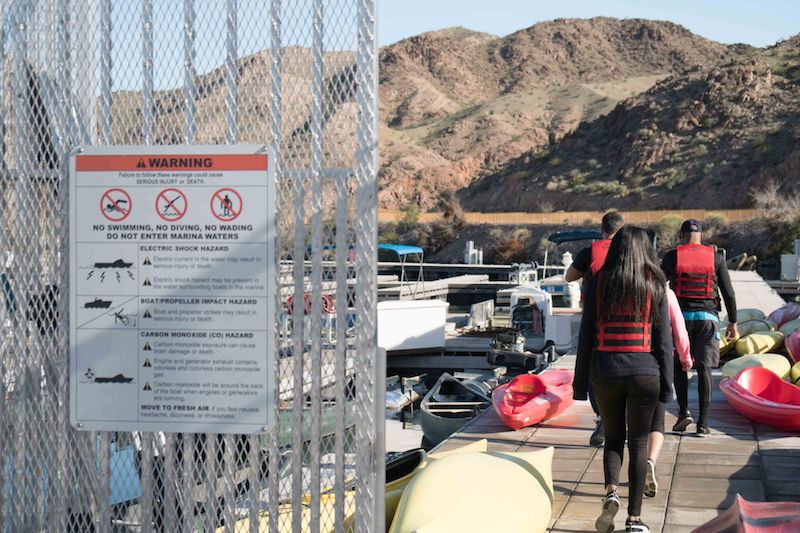
What is carbon monoxide?
Carbon monoxide (CO) is a colorless, odorless, and tasteless gas. It is produced when a carbon-based fuel—such as gasoline, propane, charcoal, or oil—burns. Sources on your boat may include engines, gas generators, cooking ranges, space and water heaters.
Why is it so dangerous?
Carbon monoxide (CO) enters your bloodstream through the lungs, blocking the oxygen your body needs. Prolonged exposure to low concentrations or very quick exposure to high concentrations can kill you. Early symptoms of CO poisoning include irritated eyes, headache, nausea, weakness, and dizziness. These symptoms are often confused with seasickness or intoxication, so those affected may not receive the medical attention they need.
Where can CO accumulate?
- Inadequately ventilated canvas enclosures
- Exhaust gas trapped in enclosed places
- Blocked exhaust outlets
- Exhaust of another vessel next to you
- “Station wagon effect” or back drafting
- At slow speeds, while idling, or stopped
How can you protect others and yourself?
- Know where and how CO may accumulate in and around your boat.
- If you can smell engine exhaust, you are inhaling CO.
- Follow all warnings and instructions for canvas, engine operations, etc.
- Maintain fresh air circulation throughout the boat at all times.
- Know where your engine and generator exhaust outlets are located and keep everyone away from these areas.
- Stay off the back deck and the swim platforms while the engines are running.
- Never enter areas under swim platforms where exhaust outlets are located unless the area has been properly ventilated.
- Although CO can be present without the smell of exhaust fumes, if exhaust fumes are detected on the boat, take immediate action to ventilate these fumes.
- Treat symptoms of seasickness as possible CO poisoning.
- Get the person into fresh air immediately.
- Seek medical attention—unless you’re sure it’s not CO.
- Install and maintain marine grade approved CO detectors.
- Every alarm requires immediate action.
- Replace detectors as recommended by the manufacturer.
- If CO is suspected, open all hatches, windows and ports to ventilate.
- Changing course and speed to place boat heading into the wind can improve ventilation.
- Maintain your engine in accordance with manufacturers’ recommendations.
- Engines that are not tuned properly produce more CO.
- Get a Vessel Safety Check.
DO NOT OPERATE YOUR BOAT UNTIL DOING THE FOLLOWING
Trip Checklist for Carbon Monoxide
- Make sure you know where exhaust outlets are located on your vessel.
- Educate all passengers about the symptoms of CO poisoning and where CO may accumulate.
- When docked, or rafted with another boat or boats, be aware of exhaust emissions from the other boat(s).
- Confirm that water flows from the exhaust outlet when the engines and generator are started.
- Listen for any change in exhaust sound, which could indicate an exhaust component failure.
- Test the operation of each CO detector by pressing the test button.
Boater’s Monthly Maintenance Checklist
- Make sure all exhaust clamps are in place and secure.
- Look for exhaust leaking from exhaust system components.
- Signs include rust and/or black streaking, water leaks, or corroded or cracked fittings.
- Inspect rubber exhaust hoses for burned, cracked, or deteriorated sections.
- All rubber hoses should be pliable and free of kinks.
Annual Checklist for a Certified Marine Mechanic
- Replace exhaust hoses if cracking, charring, or deterioration is found.
- Ensure that your engines and generators are properly tuned, and well maintained.
- Inspect each water pump impeller and the water pump housing. Replace if worn. Make sure cooling systems are in working condition.
- Inspect all metallic exhaust components, including the cylinder head gasket, exhaust manifold, water injection elbow, and the threaded adapter nipple between the manifold and the elbow, for cracking, rusting, leaking, or loosening.
- Clean, inspect, and confirm proper operation of the generator cooling water anti-siphon valve (if so equipped).





